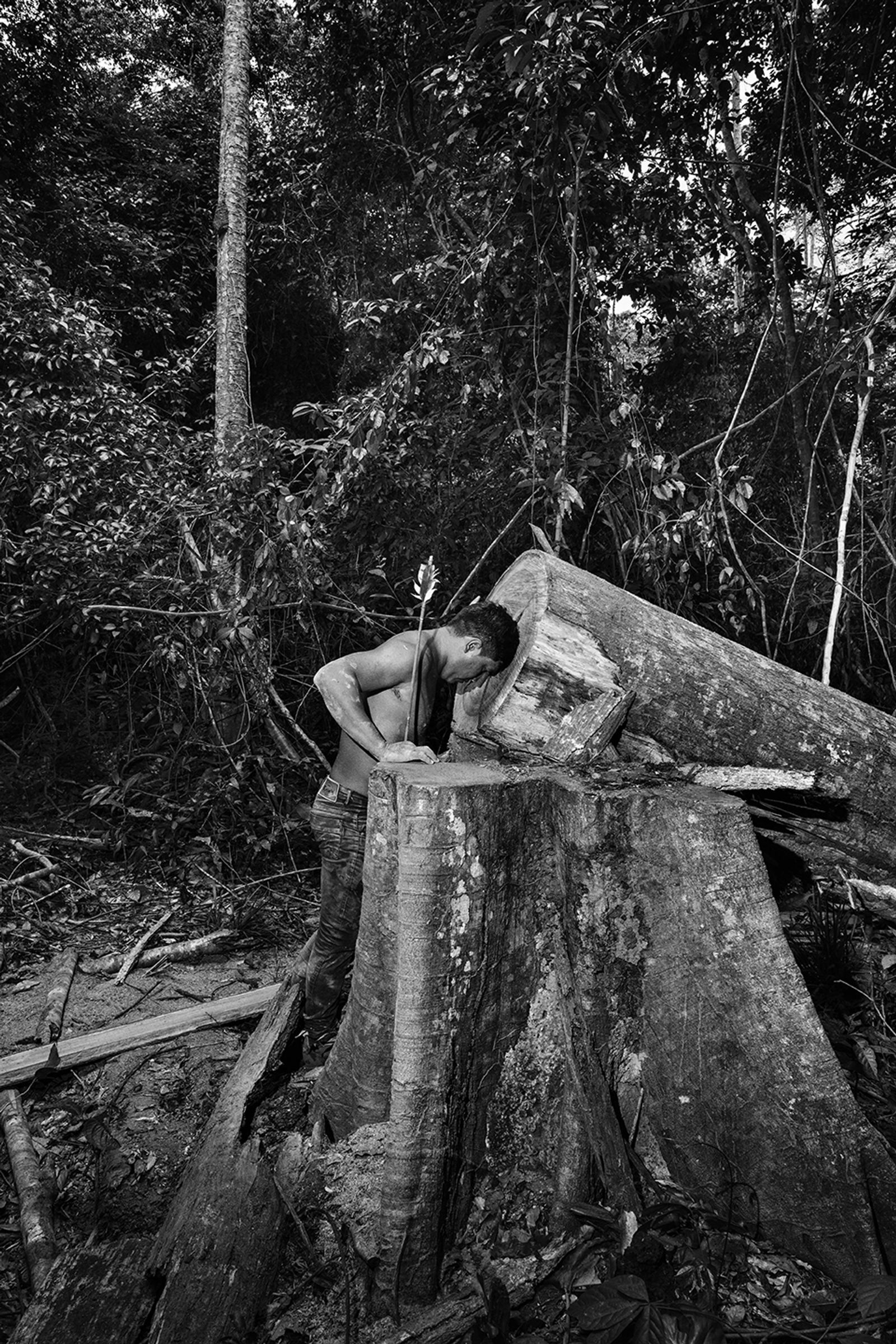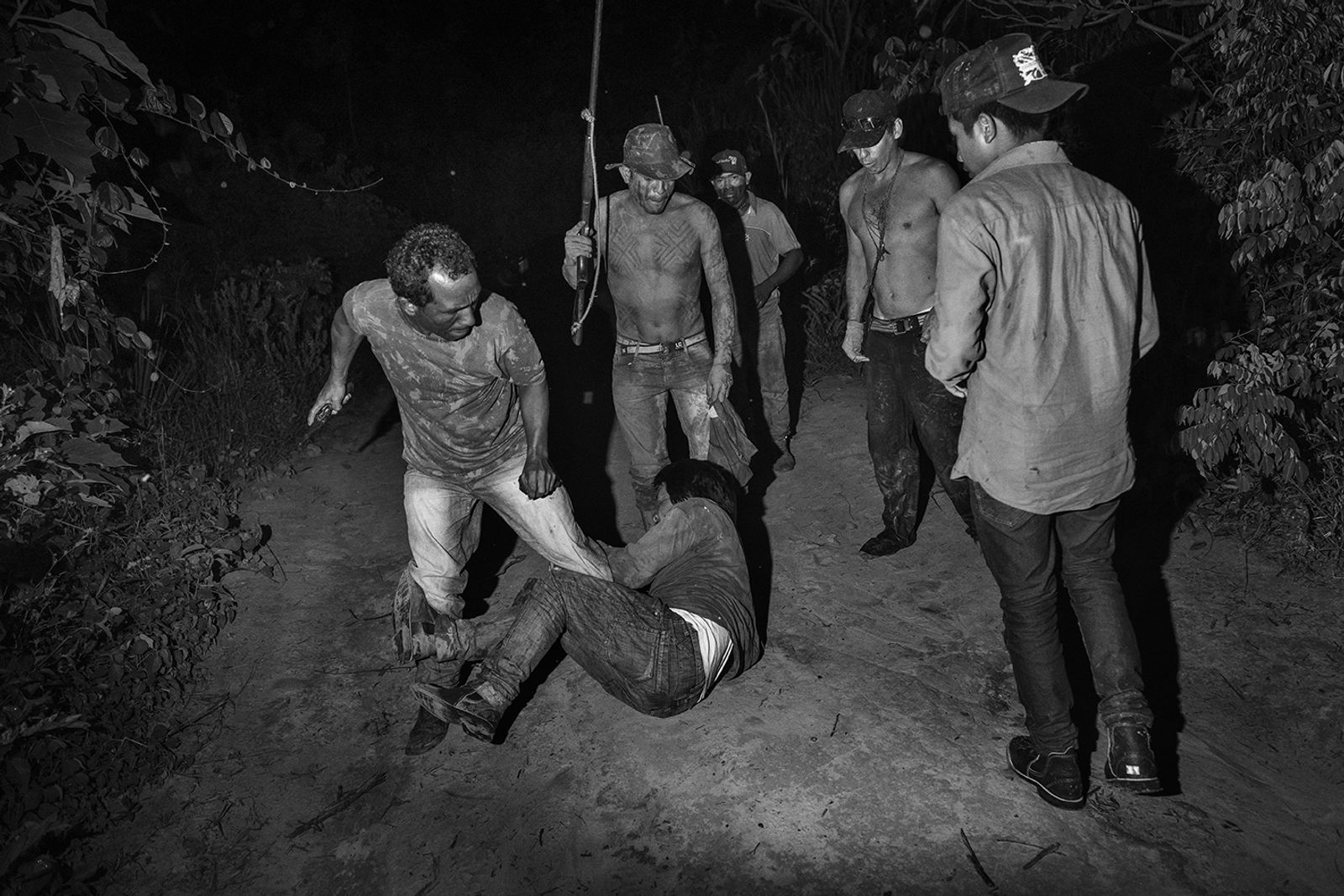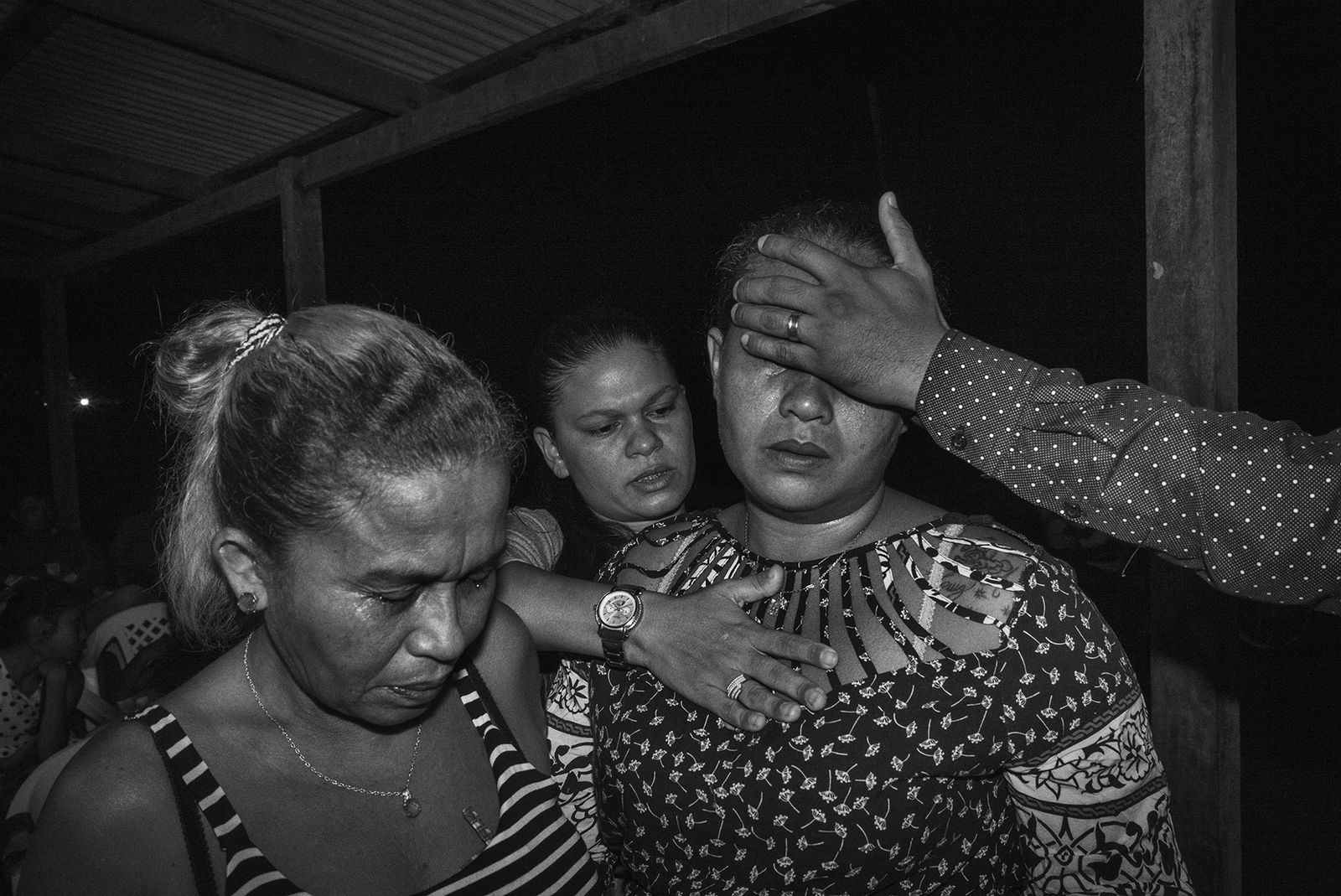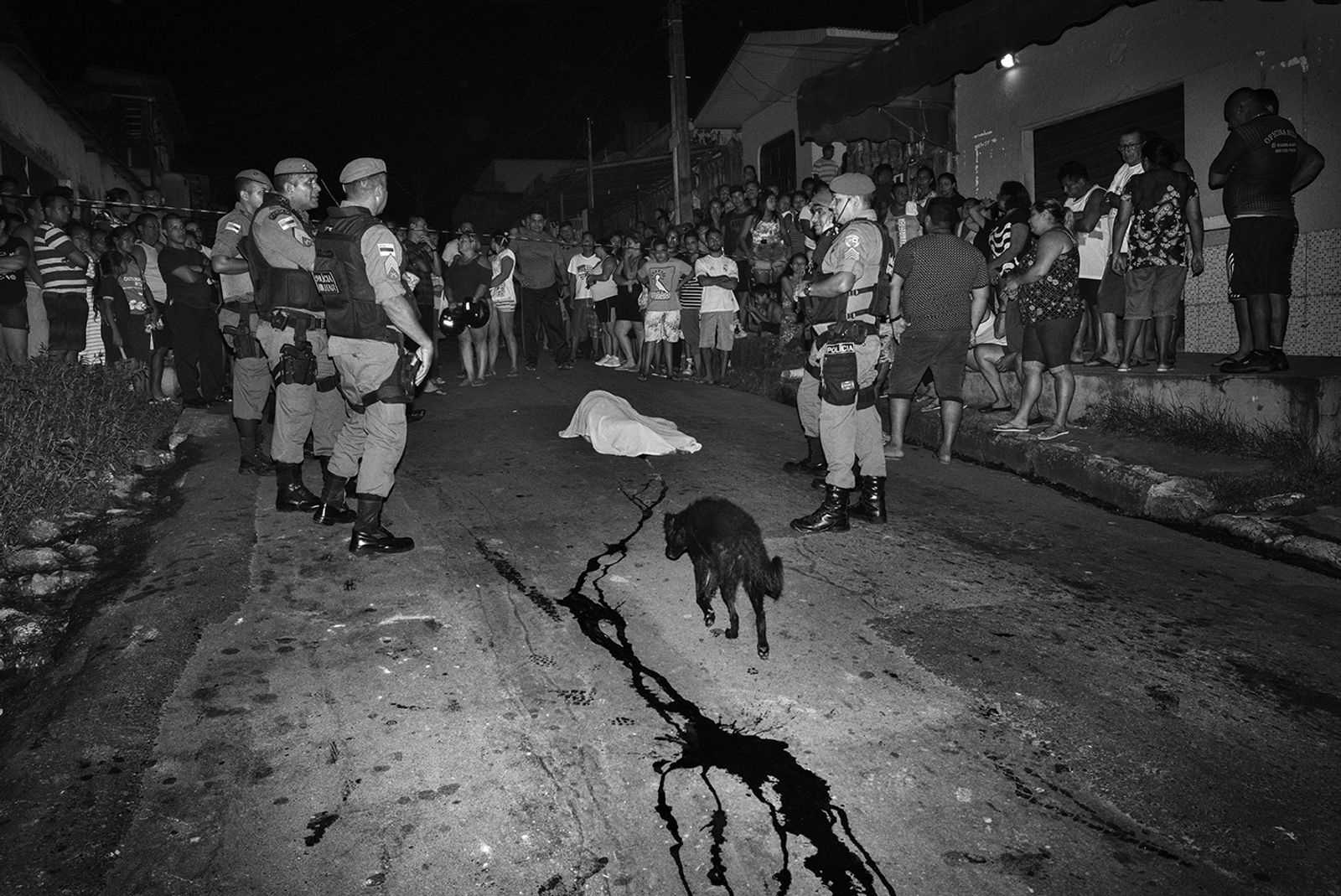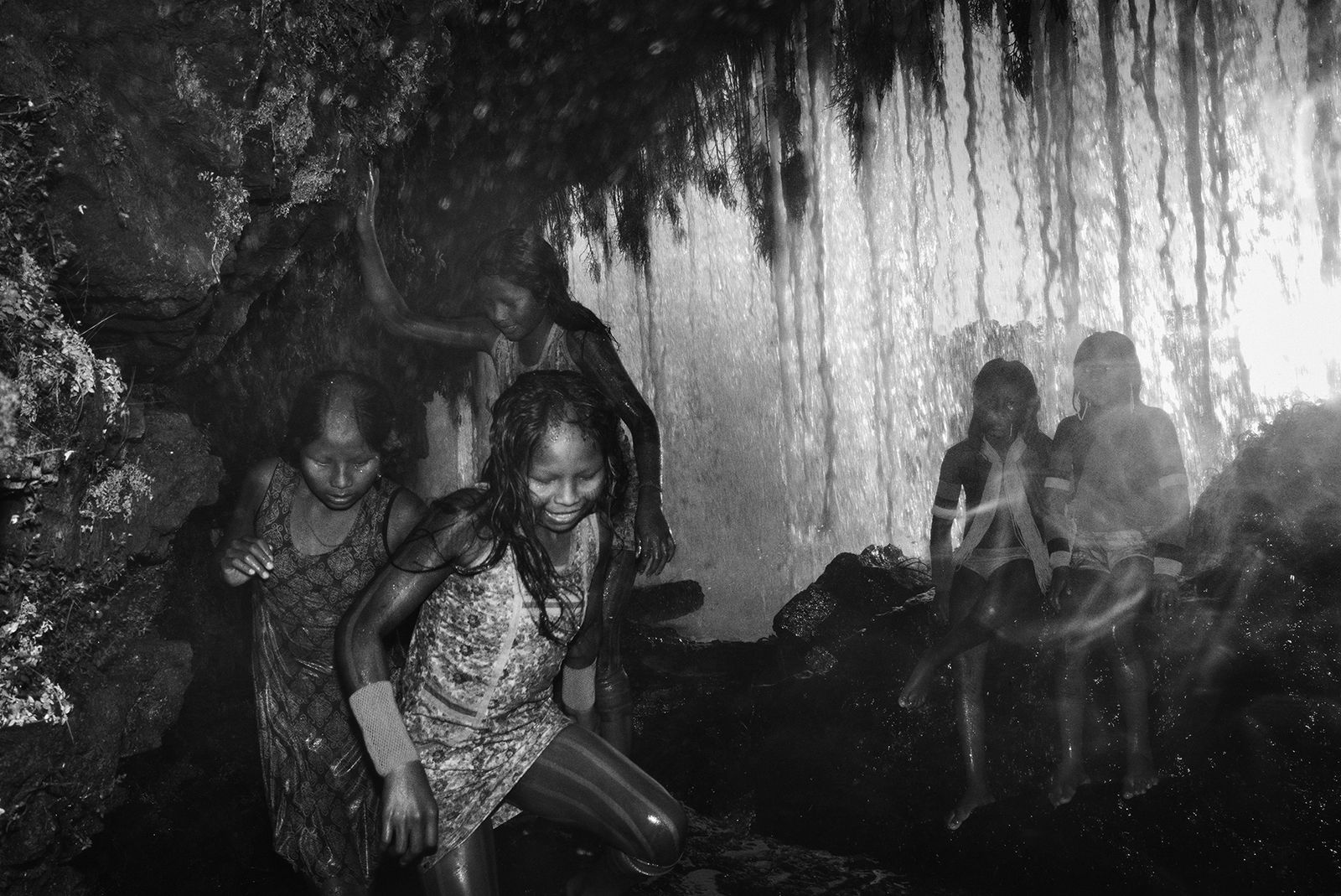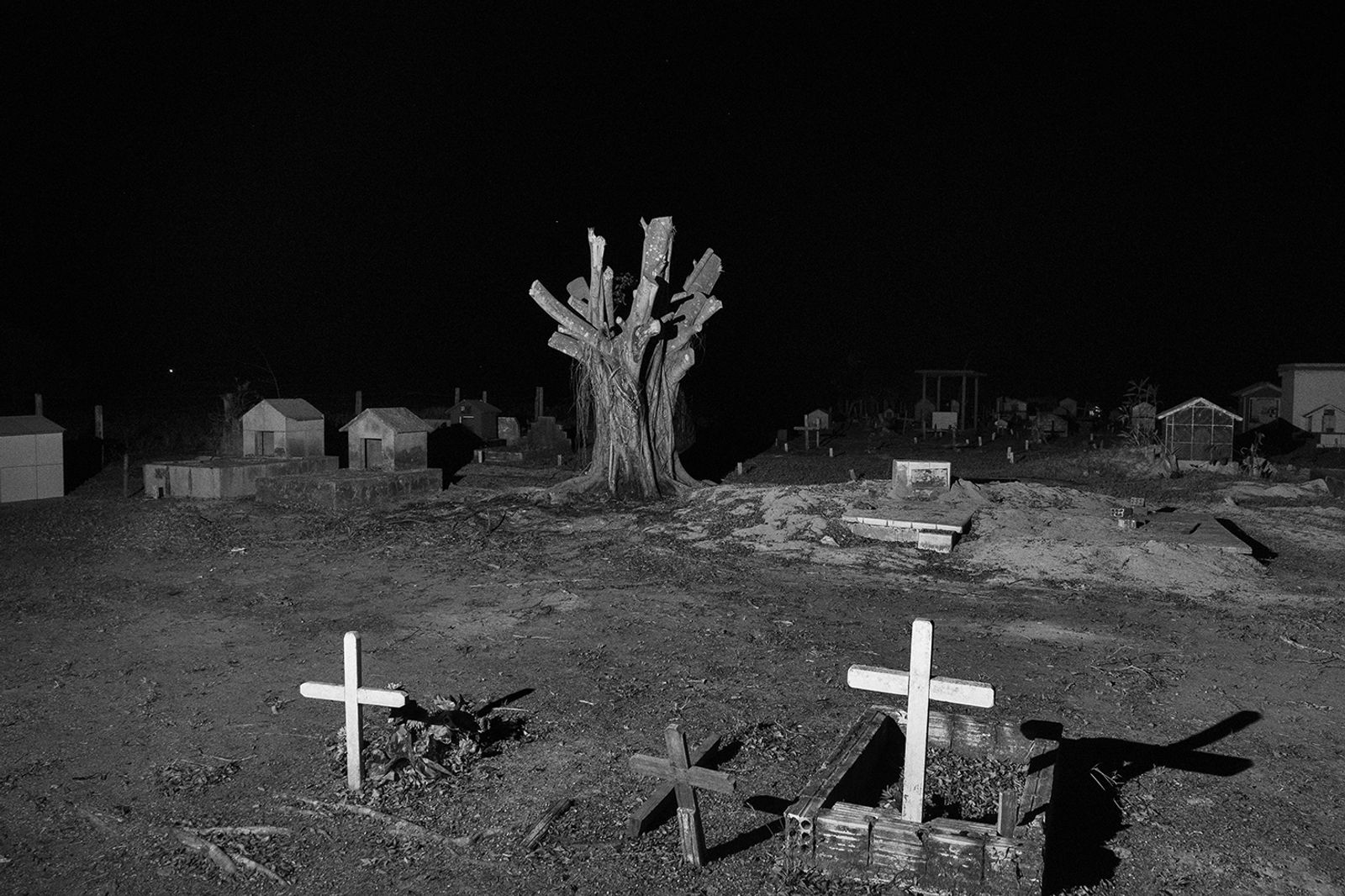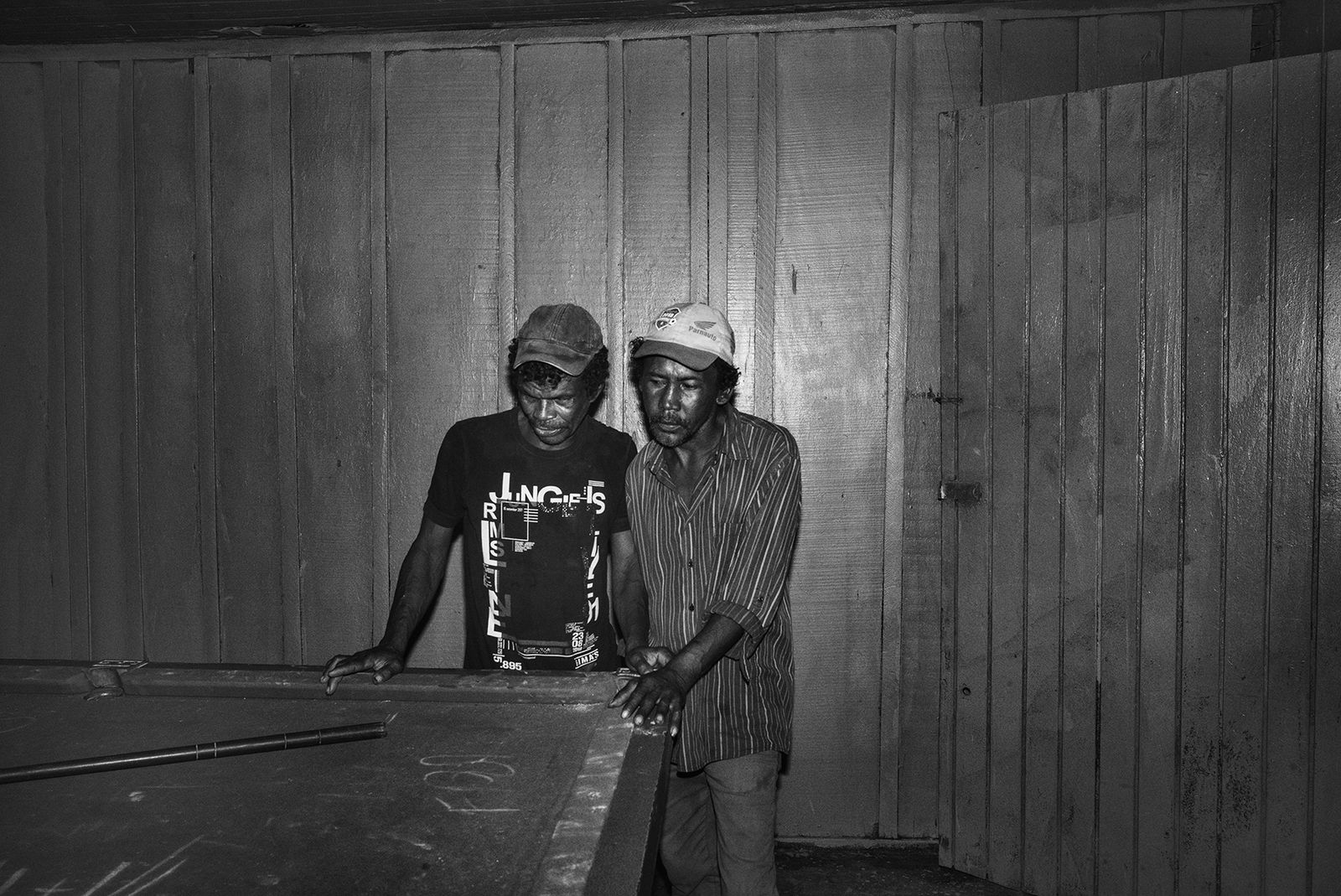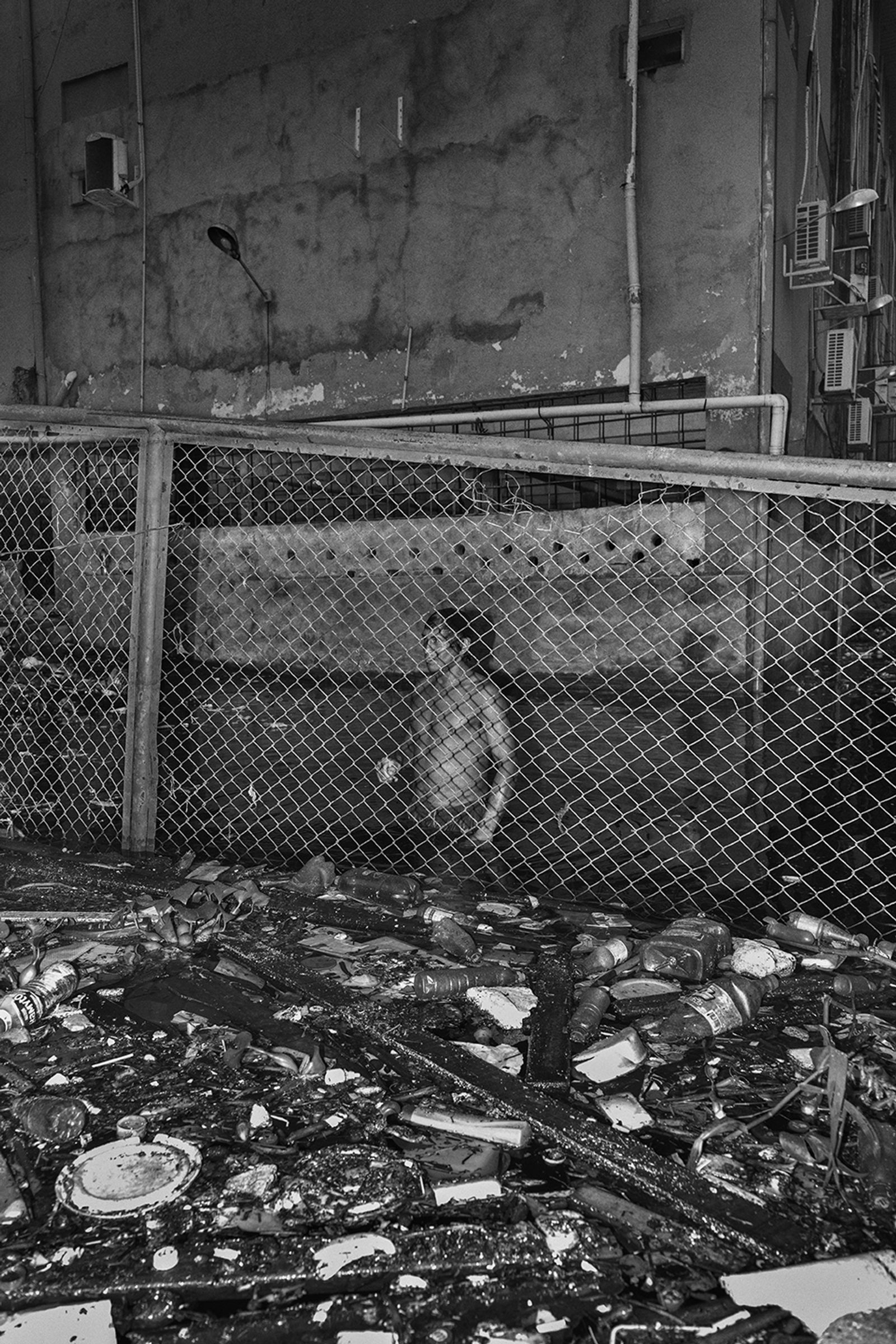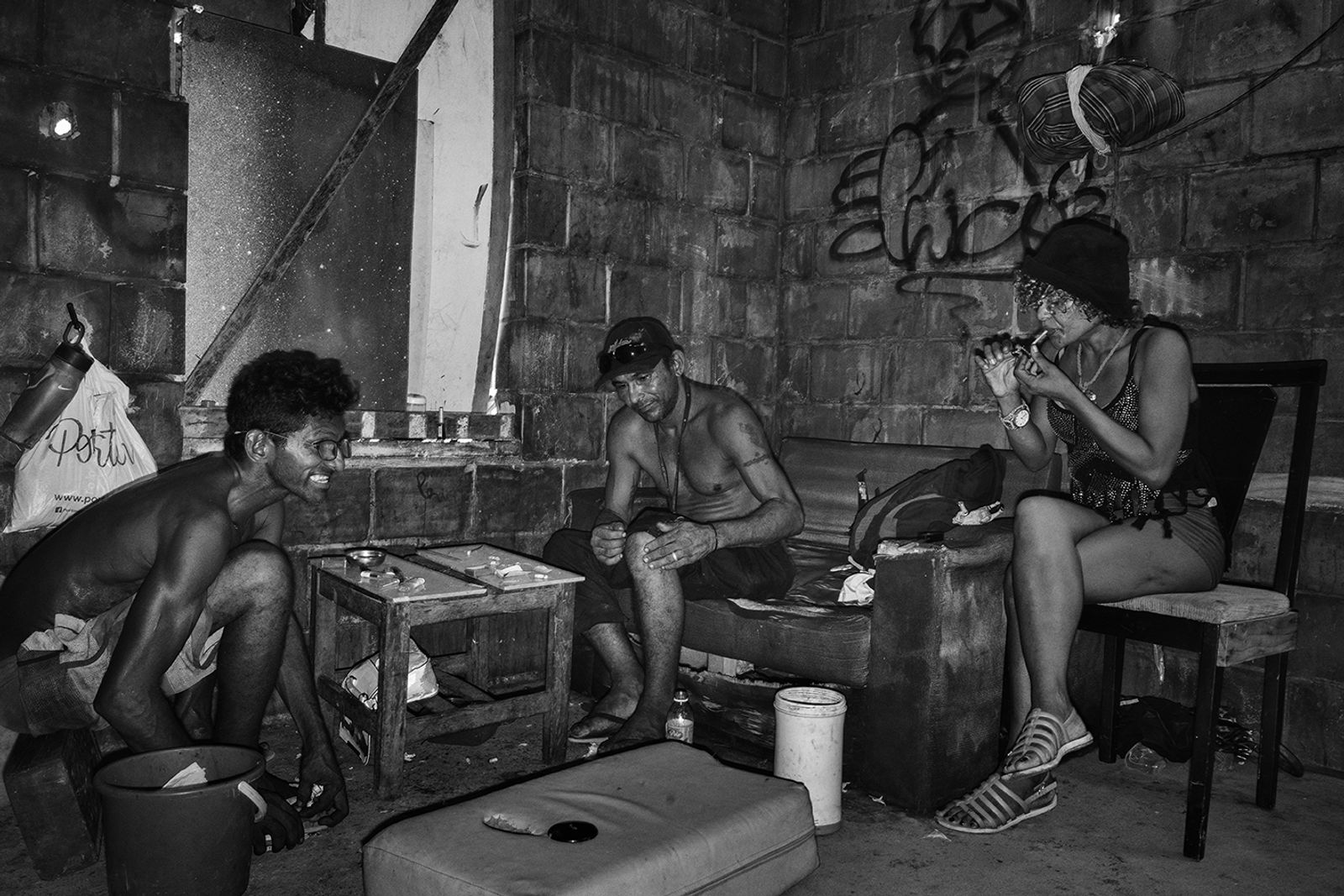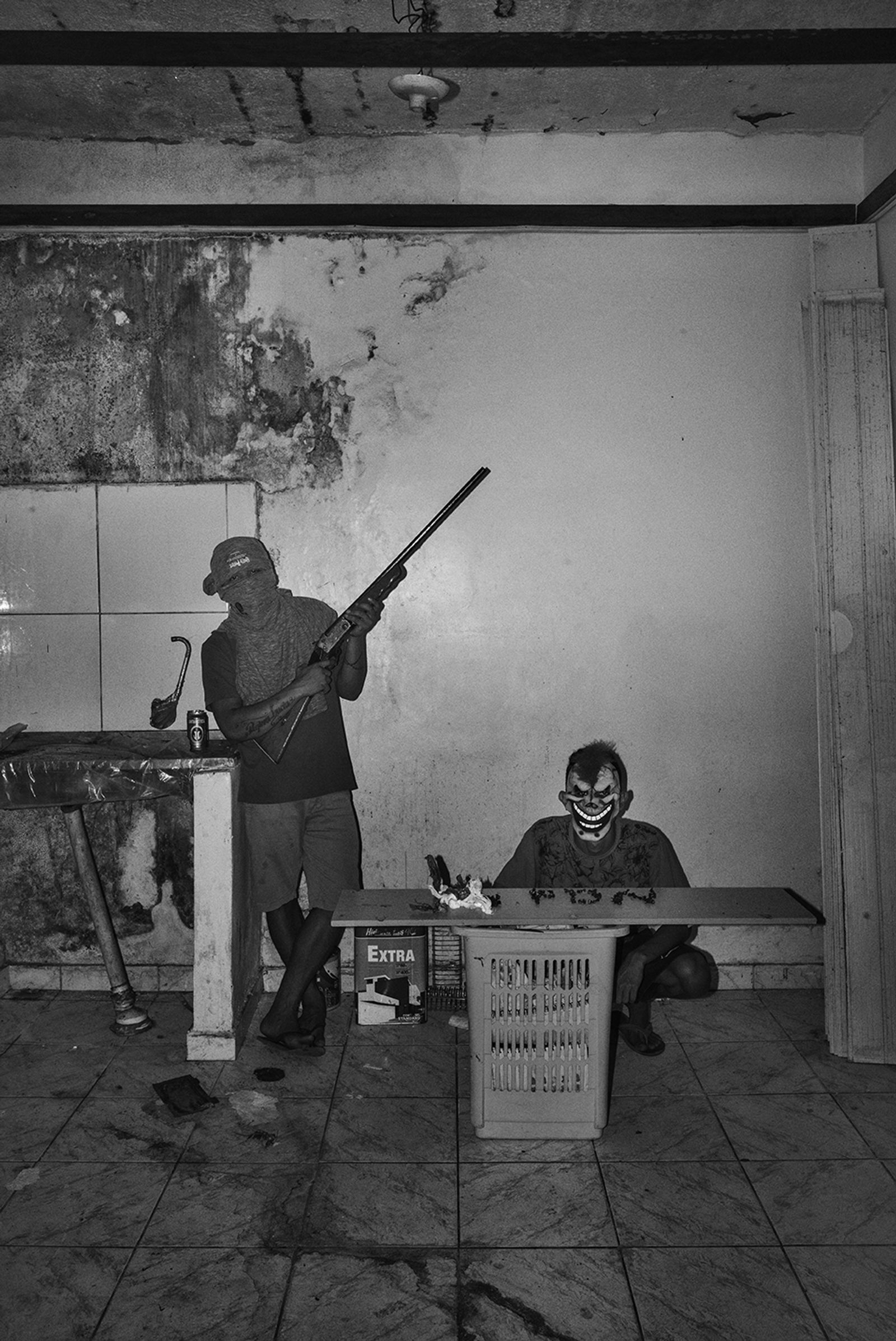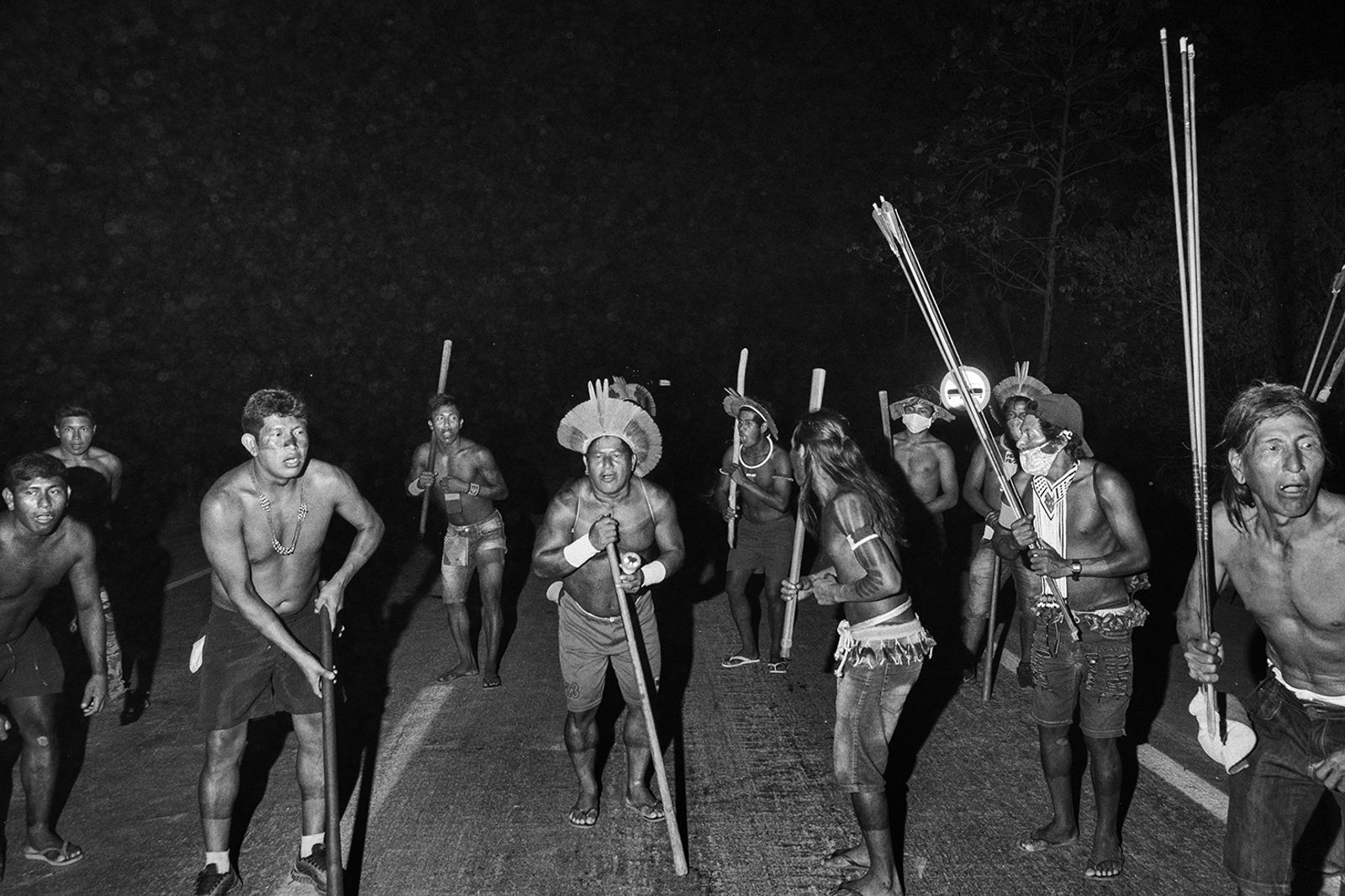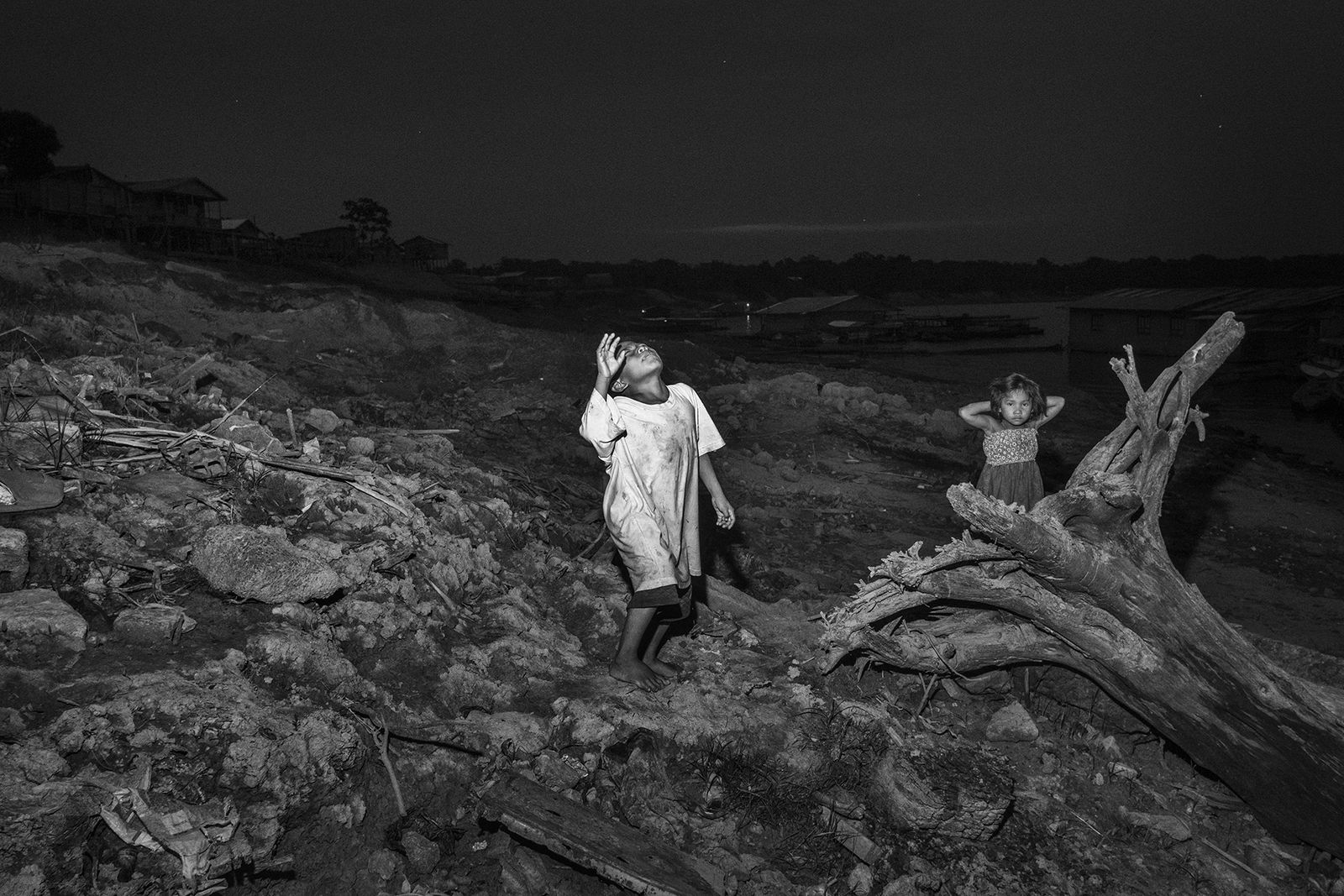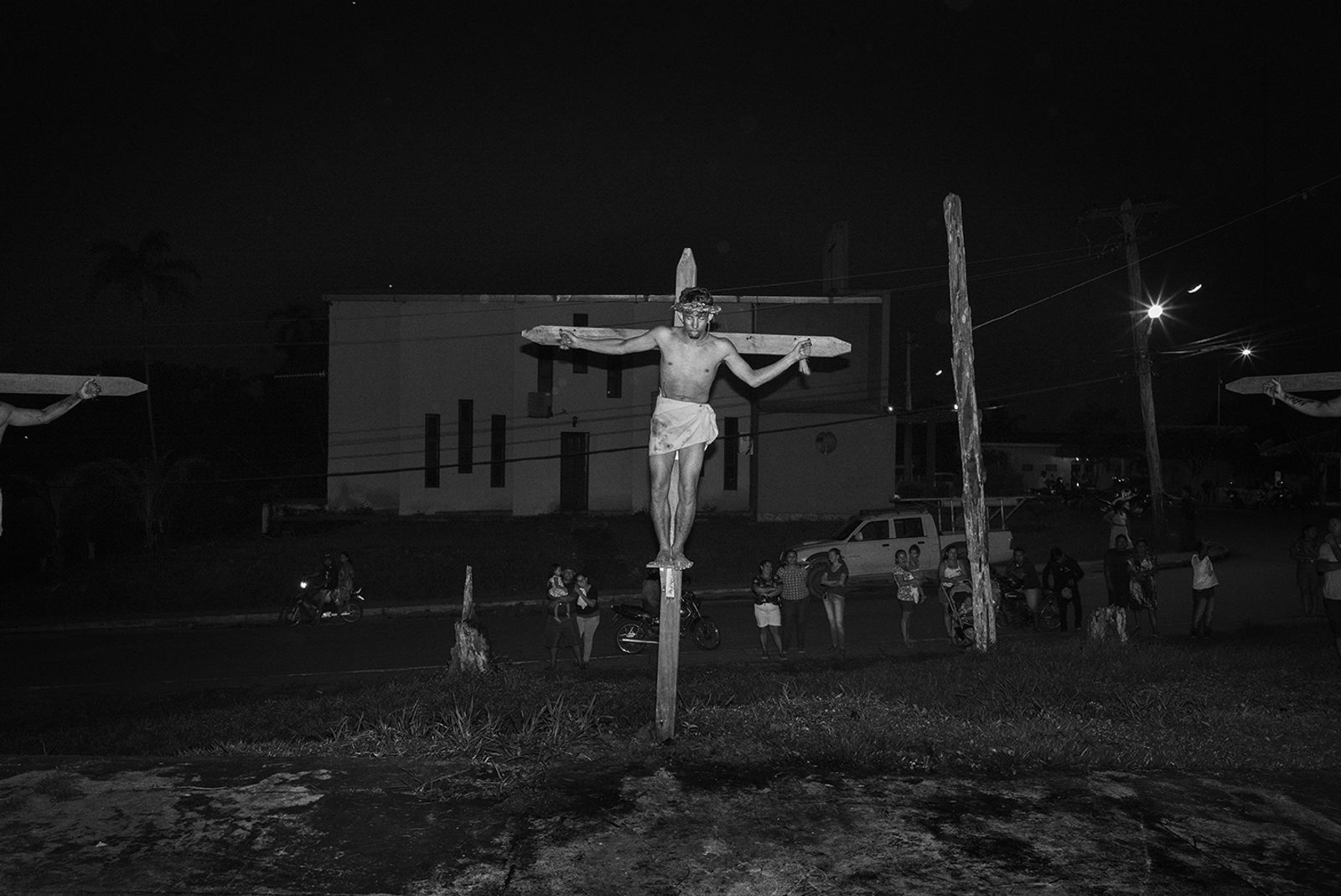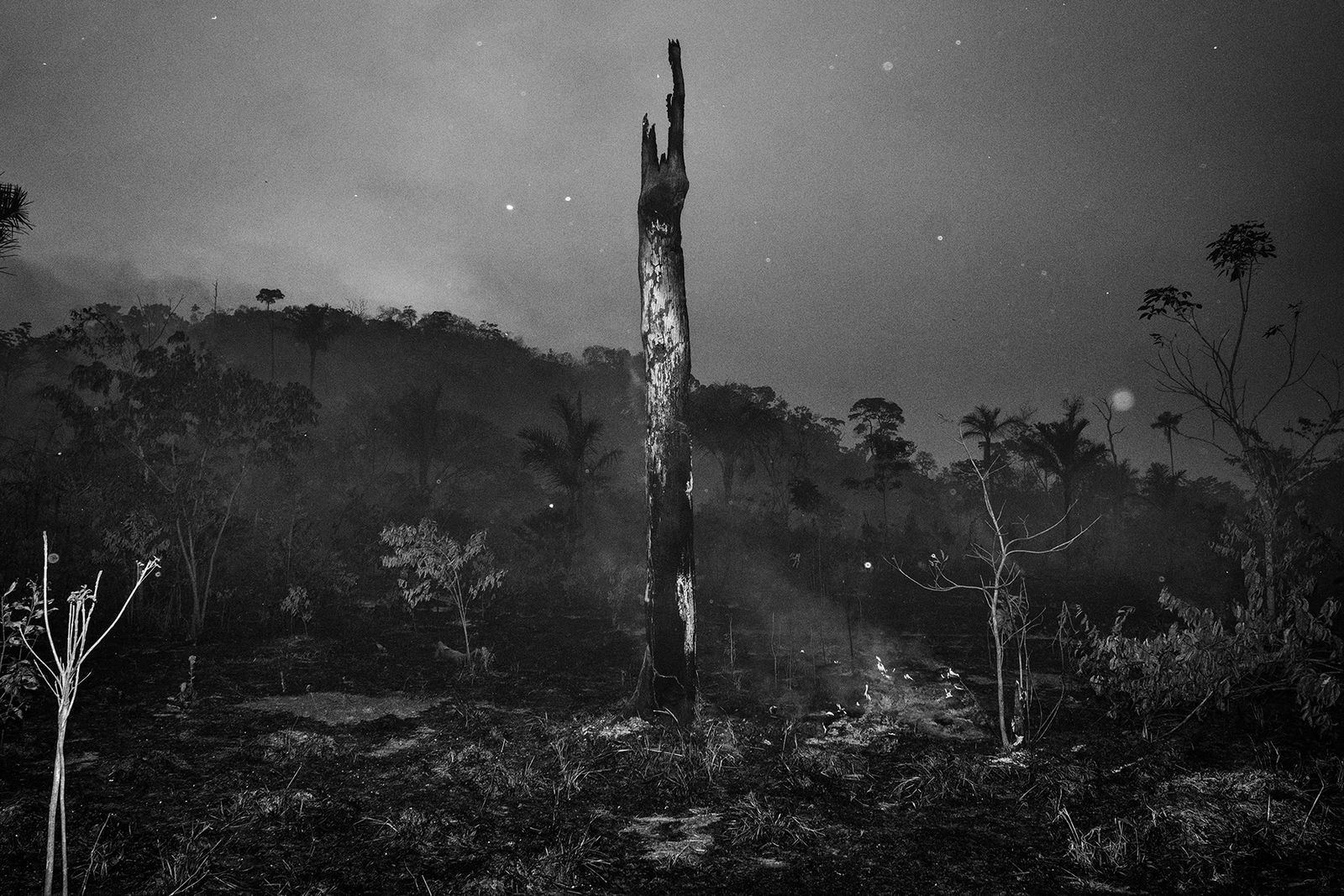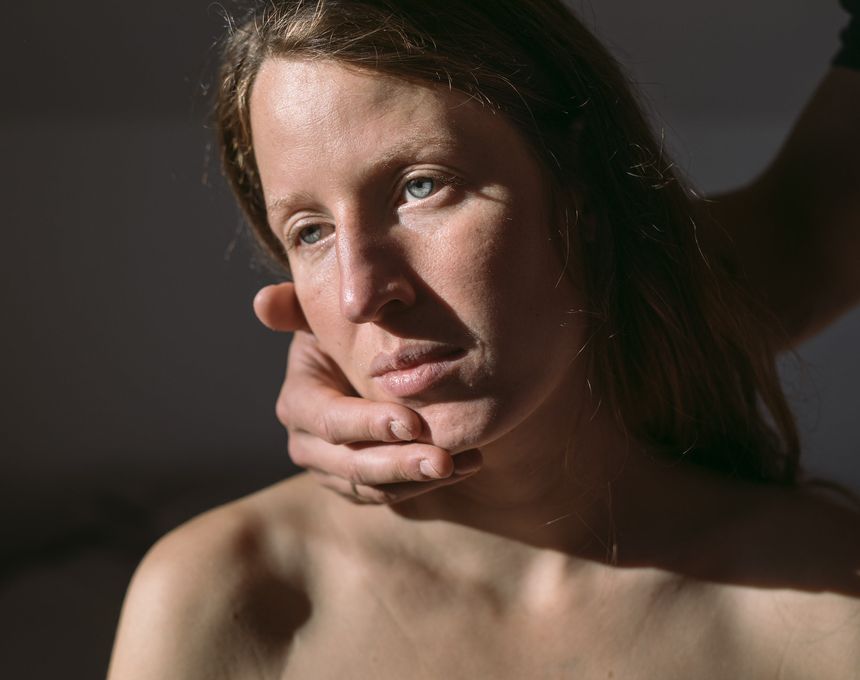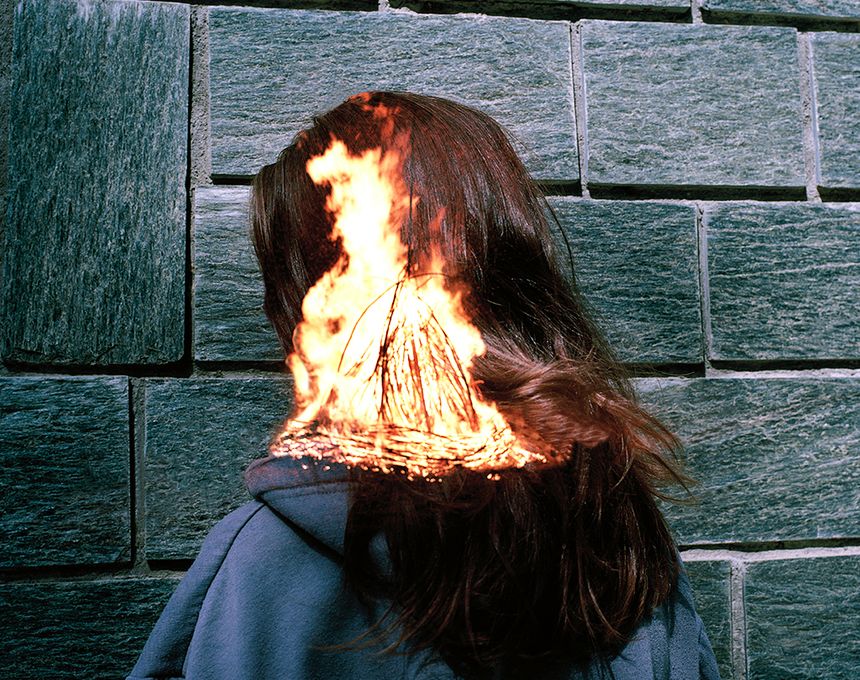Terra Vermelha
-
Dates2014 - Ongoing
-
Author
- Locations Brazil, Amazonas, Pará, Maranhão
The Amazon Rainforest is often referred to as the "Lungs of our Planet", still imagined as the unspoiled home of isolated, disconnected tribes. A thick green, green stain on the map - the world's largest - laid there by the hand of God, with no sign of man's.
From up to close, though, it's way more than woods, water and plants; cities have grown out of the jungle, into a green favela. Fields are burning, and the dark, steady stream of the Amazon River, a safe conduct for cocaine. The riverbanks are littered with trash, and bodies.
In Brazil, the Amazon region is by itself bigger than the entire European Union and hosts a population the size of Romania. It’s one of the richest parts of the country, in terms of natural resources, yet one of the poorest. Where the trees are carved into crosses.
Seven years in the making, “Terra Vermelha” is an ongoing long-term project into the dark heart of Brazil’s Amazon that documents the intersecting environmental and social crisis afflicting the region.
The title, which means “red earth”, is a reference to the Amazon’s red soil, but also the savage bloodshed that this forested kingdom has suffered for centuries and which continues today.
The region is the deadliest in the world for land rights, environmental and Indigenous activists who are resisting the predatory advance of the agricultural frontier. Meanwhile, the urban centres have become amongst the most violent in the world, the result of rapid and uncontrolled urban expansion and drug wars as the region has turned increasingly important as a route for the international cocaine trade. Rivers are polluted and destroyed by mining and dam projects. The forest itself, it’s losing a football pitch of forest cover every minute because of deforestation fueled by illegal timber sold for consumer markets and the result of agricultural expansion beef and soy.
All of this has been exacerbated in recent years as Brazil has bounced from political to economic crisis and seen resources to combat these ills slashed. With the rise of an increasingly powerful anti-environmental and human rights orientated congress, this is not a problem that is going away any time soon.
Deforestation, unregulated development, pollution and crime. All of these scenarios are driven by the same forces; poverty, weak institutions, corruption and savage self-interest. More than in other places, in the Amazon region it becomes clear that land is worth more than human life. And on the path towards the destruction of the planet, the first and closest step for mankind is still its own annihilation.
